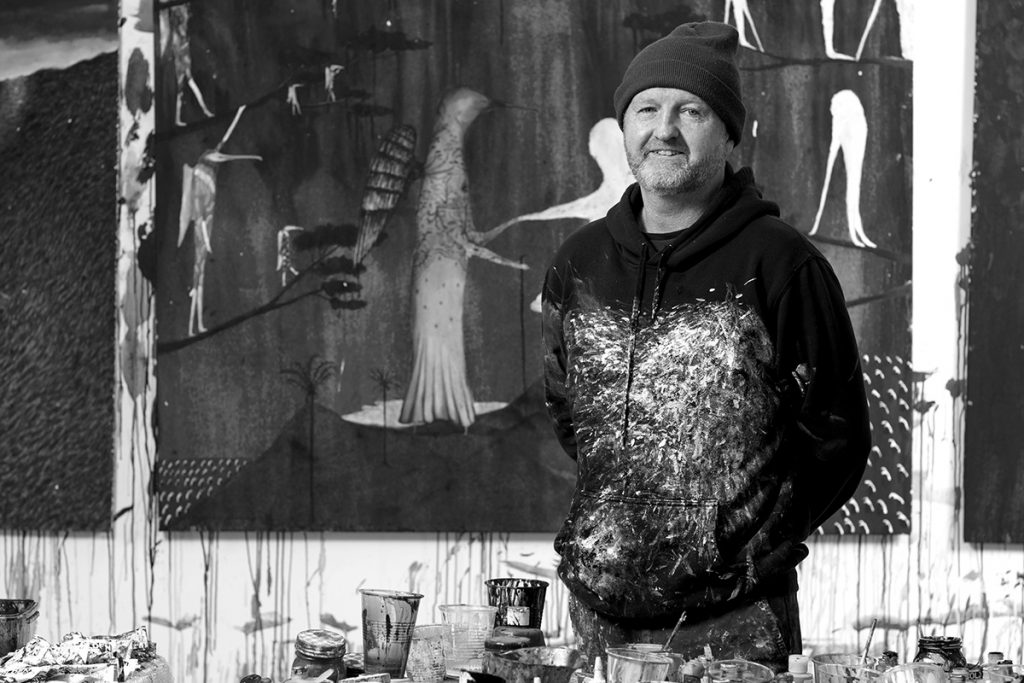Richard Lewer

There’s no hiding in Richard Lewer’s world. But it’s OK.
In confrontation with the extremes he relishes probing in his artworks – a full gamut of wonders and terrors; gaffes, guffaws and unbearable griefs – we feel safe with him. Disarmed. He understands there’s companionship in sharing confidences. Without judgement, he lures us into the confessions and stories of regular folks to find common ground in our own fallible human nature and experiences.
Whether his chosen theme is sport, true crime, voyeurism, Catholic rites, a heartbreakingly incomplete suicide pact, redheads or personal disasters, Lewer seeks out the pith of the thing (despair, injustice, humour, resiliance, humiliation, great love, death …). And with deceptive simplicity, using sophisticated artmaking skills, he pares down the drama to its most expressive form.
A restless appetite for challenge drives him as much as discipline and training. Firstly, to gather material, either directly from interactions with others or by reading. Secondly, to switch mediums – anything from billiard-table skins and acoustic-board tiles, to steel, copper, mirror and clay – and to move across drawing, painting, animation, performance and installation. Finally, to immerse himself in new physical goals that play into his life and artmaking, like boxing, trekking the Kokoda Trail or preparing for Melbourne’s 100km Oxfam Trailwalker. Yarning, of course, is always part of the action.
Of the boundaries he often talks about dissolving, the slippery spaces between private and public, between the studio and life outside, are most intriguing for him. The work represents more than the art object itself: it’s the summary of its evolution, the people, places and emotions invested there.
Now he’s an Australian citizen, New Zealand-born Richard can be claimed as a national treasure. Since settling in Melbourne as a young graduate in 1996, he has been recognized by significant residencies and awards, regularly selected for high-profile exhibitions, and collected by major public institutions both in New Zealand and Australia.
Download CV